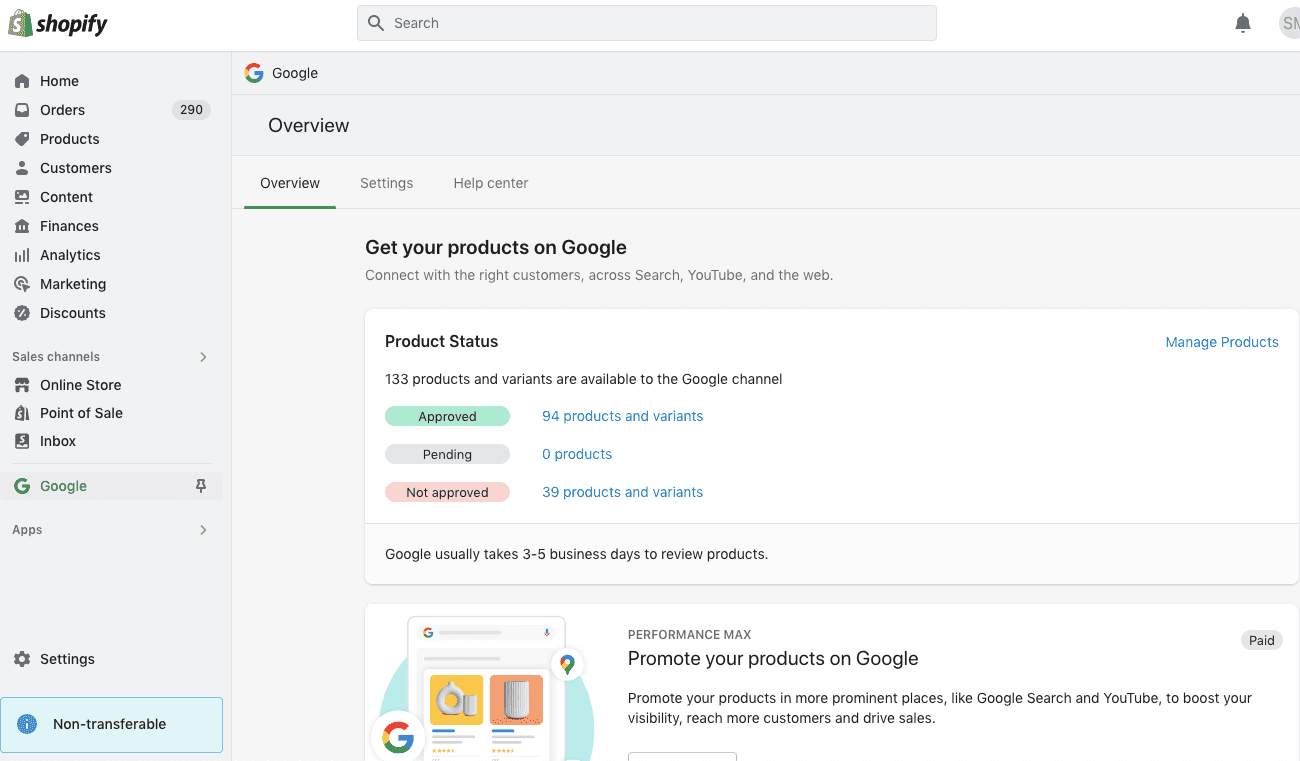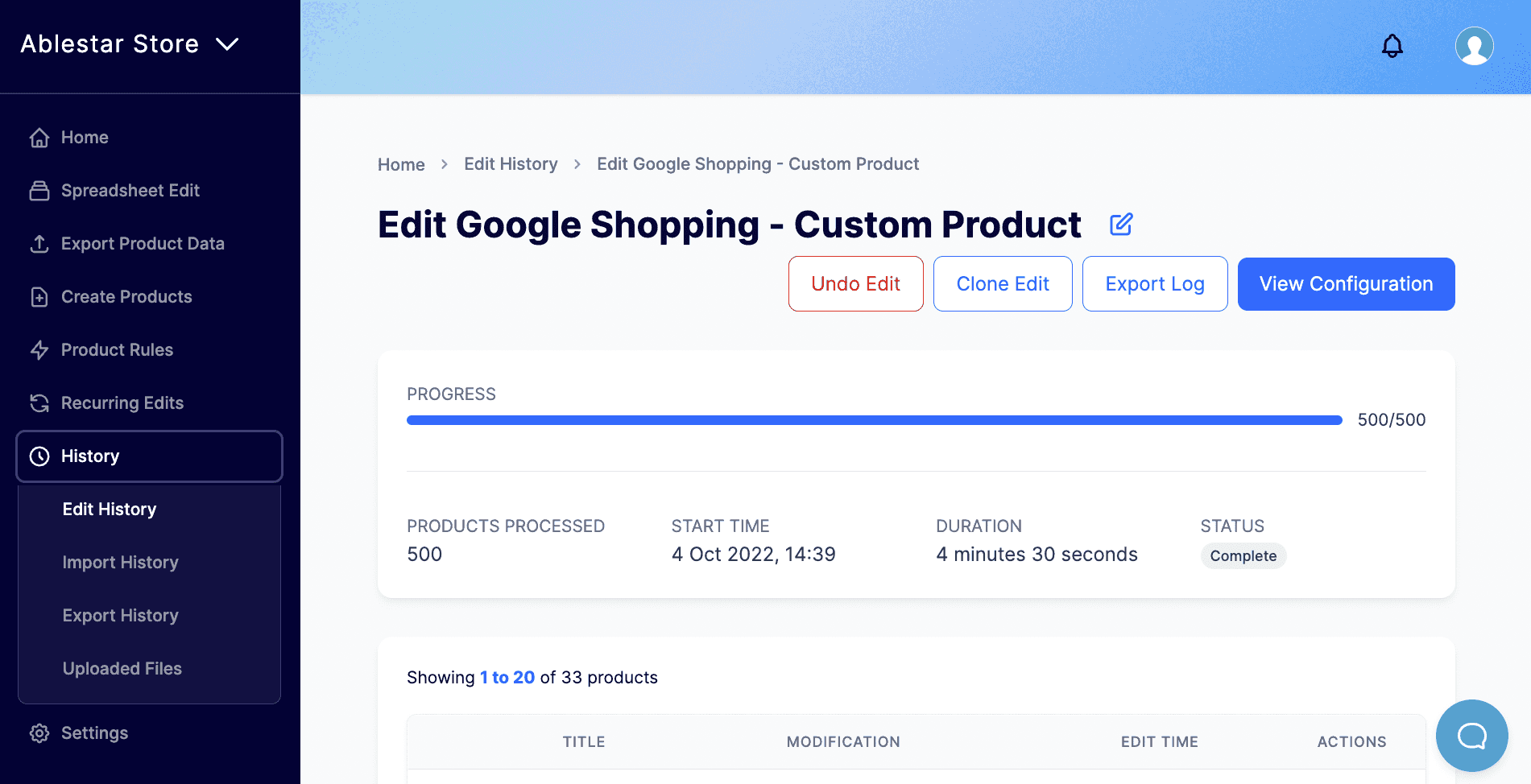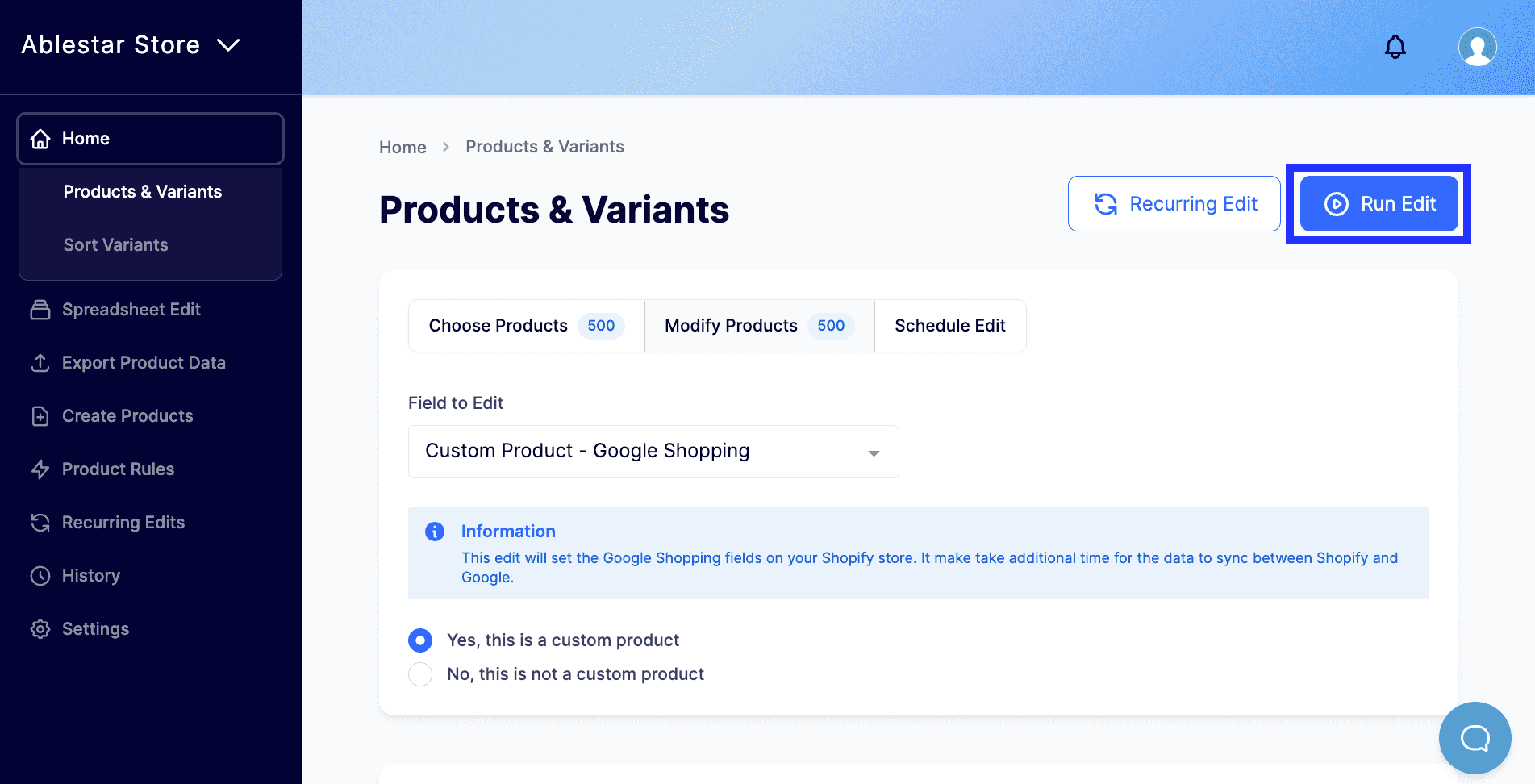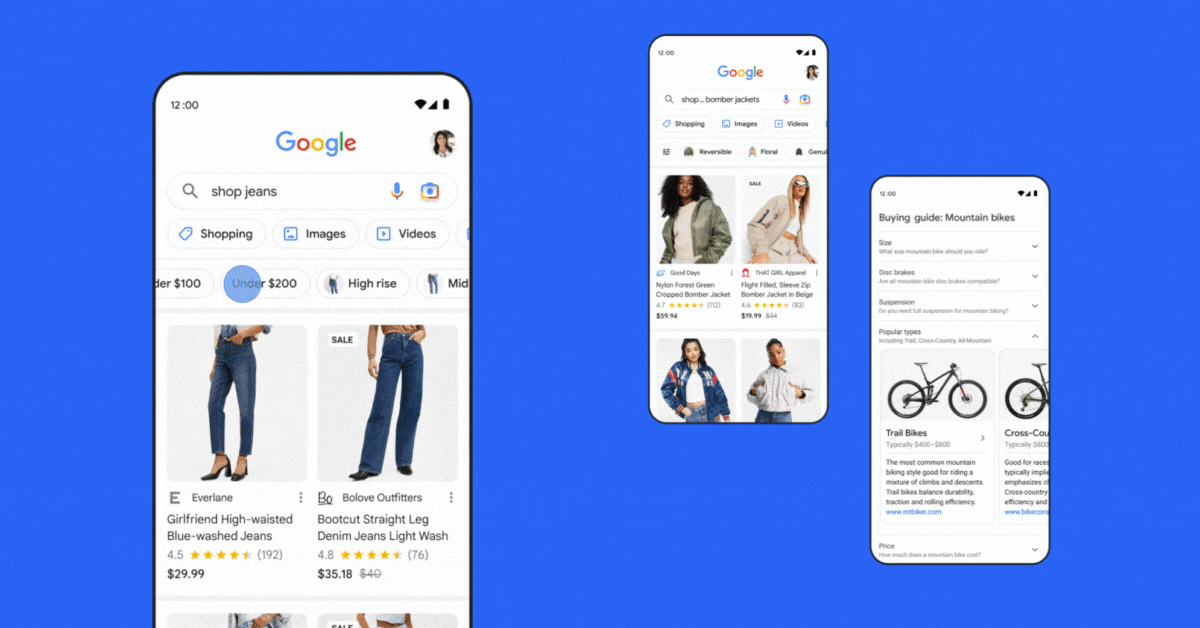Google: love it or hate it, store owners need to learn how to live with it. It’s the front door to a Shopify owner’s business– 49% of people say they start their search for a new product on Google.
But there’s more than optimizing your website for SEO. Publishing your feed to Google Shopping can boost visibility and revenue for your store. It’s visual, it’s optimized for purchases, and it’s free.
What are the benefits of publishing your store to Google Shopping?
“Google is expanding its reach with shopping every year, so it is extremely important for merchants to list their products to maximize their business potential,” advised Emmanuel Flossie, Founder of FeedArmy Co., Ltd.
“Last year Google announced that free shopping listings will be available on web search and YouTube, while prior to this it was only available on the shopping tab, images, and discovery.” Publishing to Google Shopping is also necessary to publish shoppable ads and gain targeting insights about your customers through Google Ads.
However, publishing to Google isn’t always simple. If you’ve set up a feed through Shopify, you may have received a frustrating notification that your products were disapproved or have limited performance due to missing identifiers.
Don’t panic– you just need to learn a few of Google Shopping’s quirks. In this article, we’ll walk you through the top validation problems with Google Shopping and how to fix them.
How to publish your Shopify store to Google Shopping
First, let’s give a quick overview of how Shopify stores work with Google Shopping. For the feed to work, you need to make sure Shopify has the correct information about the product and then that data needs to sync with Google Merchant Center. There are a few different ways to do this.

Option 1 – Use the Google Shopping App for Shopify
The most common way that Shopify owners sync their data to Google Shopping is by using the official Google Sales Channel app for Shopify. You can create a Google Merchant Center account in the app or sync it to an existing one. The benefits of this app are that it’s free and easy to set up. The drawbacks are that it doesn’t give you much visibility into when the data is synced, and it can take several days for the data to show up in Google Merchant Center.
Option 2 – Use a third-party app
This lack of visibility causes some merchants to use other apps to move the data between Shopify and Google Merchant Center. Several examples are Google Shopping Feed (free) and Ablestar’s Bulk Product Editor. With the Ablestar Bulk Product Editor for instance, you can view and bulk edit Google Shopping fields for all of your Shopify products, which you can no longer see in Shopify Admin. If you have a complex store or multiple stores, you may want to consider a multiple feed app.
Once your feed is set up and the data is synced, Google will validate the products and say if they’re approved or not. This is where things can get tricky.

Common validation issues in Google Shopping
If you receive a notification that some of your products aren’t approved by Google, you need to first find the source of the issue. The Google Channel in Shopify Admin will display your products as either approved, pending, or not approved, but you may not be able to tell why.
While some validation issues are simply a matter of missing product information that you can fix in Shopify Admin, others will require you to troubleshoot the feed itself or log into Google Merchant Center to see more details about the issue.
Through March 2023 it was possible to view the Google fields for a product directly in the Shopify admin. Now, you need to use an app to find and edit that information.
Product identifier issues: GTIN, MPN, brand, and barcode
The most common validation issues that ecommerce owners face are related to product identifiers. For most products, Google Shopping requires a brand name and a global trade item number (GTIN) or manufacturer part number (MPN). First, log into Google Merchant Center to find the source of the issues under the “item issues” tab.
Here are common mistakes with product identifiers:
- Submitting an SKU number in place of an MPN. These are different numbers and aren’t interchangeable.
- Submitting a GTIN that doesn’t match the brand. Google cross-references your GTIN to make sure it matches the brand, so you may get an error if they find the GTIN doesn’t belong to the brand.
- Inaccurate GTIN numbers. GTINs are typically 8, 12, 13, or 14 digits. Check to see if yours has too few or too many digits.
Missing barcodes
Missing barcodes are another common reason that Google rejects products. If you forgot to add barcodes, you can upload them to Shopify in Shopify Admin or the Ablestar Bulk Product Editor, then re-sync your store to Google. Double-check with the manufacturer to see if they can assign one to you if missing.
If the manufacturer doesn’t assign barcodes, you need to submit your item as a custom product (read on for instructions). Take note that Google requires barcodes for apparel and accessories, so you can’t get around missing barcodes in that category.
Other missing identifiers
Certain categories of items require specific attributes, and your products will be rejected without them. You’ll see an error like “Missing value [color]”. These are:
Apparel and accessories (see note about variants below)
- Gender (male, female, and unisex are accepted)
- Size
- Color
- Age group (newborn, infant, toddler, kids, adult)
Music, Movies, or Video Games
- UPC, EAN, or JAN as a unique product identifier
Books
- ISBN in the GTIN value field
Note: a brand name is not required for books and media.
Depending on the data feed app used, you may need to add these using feed rules in Google Merchant Center. If you are using an advanced data feed app such as Multiple Google Shopping Feeds, you can set up extractions from titles or description values.
Ways to fix product identifier issues
- If you need to add or modify product identifiers in Shopify, go in and edit the products, then resync your store to Google
- If your product doesn’t have a GTIN, then you can use an MPN and brand name
- If your item doesn’t have a brand name, you can use the manufacturer name or your store name if you manufactured the item
- If you have a handmade or custom product that doesn’t have a MPN, GTIN, or barcode, take the following steps for custom products
How to specify variants in Google Shopping
In the Shopify admin you can only edit the Google fields at a product level, but some things like colors could be different for each variant. If the variants are labeled correctly, Google will pick up the Shopify variant option values and you do not need to set the Google color field. It’s the same for sizes: there’s only one Google Shopping size field, but shirts have many sizes.

Custom products in Google Shopping
If you sell custom products, for example, handmade or vintage items, then you need to follow a few extra steps. You should specify a product as custom when there are no barcodes assigned by the manufacturer. This can be checked by visually inspecting the product packaging or contacting the manufacturer.
- To designate your product as a custom item, choose a value of True (is custom) for the Custom product attribute. This must be done in the bulk editor in the Google Sales Channel or through an app like the Ablestar Bulk Product Editor.
- Since custom products don’t have a GTIN or barcode, you need to tell this to Google. In Google Merchant Center, open the item you need to edit and select “false” or “no” for “identifier_exists”. Then, leave the brand, GTIN, and MPN numbers blank.
- Re-sync your data to Google
A few other tips to keep in mind for custom products:
- Make sure to set the condition of any vintage/used items as ‘used’. Unfortunately, used items aren’t eligible for Buy with Google.
- To save yourself time, you can create a rule to set all products in your Google Shopping feed with “identifier_exists” as “no”. Follow step-by-step instructions from FeedArmy here.

Missing or insufficient images
Google Shopping products must have an accurate image displaying the product. You can’t use a placeholder or logo. You also can’t have anything like a watermark or promotional text on the item. Images must be at least 250 x 250 pixels and no more than 64 megapixels.
Ways to fix missing or insufficient images
Upload images through Shopify or a bulk editor app and re-sync your feed.
Price and availability mismatches
You may also receive an error message or warning about missing or invalid data for prices or availability. If Google finds that your price, discounted price, or availability doesn’t match what’s on there, it’ll reject it or give a limited performance warning.
“This issue is almost always due to incorrect or incomplete structured data and incorrect open graph values,” shared Flossie.
Ways to fix price and availability mismatches
Most of the time, this is an issue with the theme and you can fix it by updating the theme. Here are some step-by-step directions to troubleshoot price and availability validation errors.
Shipping and tax issues
For products sold in the U.S., you can encounter issues when your shipping and tax settings aren’t enabled correctly to keep you in legal compliance with all the state-by-state requirements.
Ways to fix shipping and tax issues
To resolve this, the best option is to apply the correct shipping settings within Google Merchant Center. On the top right-hand corner, click the gear icon and navigate to Shipping & Returns/Tax Settings to double-check that your settings follow Google’s requirements.
Syncing issues
One of the common issues with publishing to Google Shopping is syncing. Updating your products from Shopify Admin or Google Merchant Center alone can take two to three days. Sometimes the link breaks entirely, requiring you to contact Shopify support to resync the data for you– and setting you days behind schedule.
Ways to fix syncing issues
Using an app outside of the Google Sales Channel app can give you added visibility into your syncing issues. For instance, with the Ablestar Bulk Product Editor, you can see exactly when your data was sent to Shopify and Google and have more control with edit previews and reversals.
You can also look at your data feed rules to make sure your feed settings are correct.
How to confirm that your validation issue is resolved
The diagnostics page in Google Merchant Center will allow you to see if the changes you have made are effective within half an hour.
To verify if the edits have been made, you can check by logging into Google Merchant Center and visiting Products > All products. Then click on your product, scroll to the bottom, and view the final attributes and data. Once confirmed, it should take half an hour for the diagnostics tab to remove the error or warning.
Top tips for a clean upload to Google Shopping
Publishing to Google Shopping has a learning curve, so don’t be discouraged if you see lots of errors early on.
It is very rare to get a data feed perfect from the first try, as Google has hundreds of policies, that would make it near impossible for a merchant to know them all.
“Even I, who have been working in this field for over 14 years, still learn new things every month,” said Flossie. “And Google introduces new policies every few months.”
However, there are a few things you can do to give yourself an early chance at success.
- Review Google’s requirements for its data feed so you understand what you need to include in your product information
- Focus on your product identifiers (brand, GTIN, MPN, barcode)
- Include attributes for apparel products (color, size, age group, gender, material, pattern)
- Make sure you add the most accurate category for your product with these best practices
- Include high-quality images and optimized titles and product descriptions
- Avoid excessive capitalization or special characters like “&” in your data
Finally, it’s essential to follow all of Google’s Google Ads policies, Google Shopping policies, and Google Ads and Local Services Ads Terms and Conditions. If you don’t, your Google Merchant Center account could be suspended without warning, causing all of your products to be delisted.
With a bit of troubleshooting and a few tricks up your sleeve, you can become a Google Shopping pro. A successful Google Shopping feed is the foundation for your online presence and any Google Shopping campaigns you may want to run. Once you’ve done the work to set up your feed correctly, your products will publish to your Google search without you lifting a finger.



